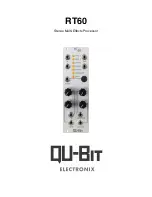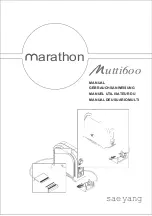
a.
Power tool plugs must match the
outlet. Never modify the plug in
any way. Do not use any adapter
plugs with earthed (grounded)
power tools.
Unmodified plugs will
reduce the risk of electric shock.
b.
Avoid body contact with earthed
or grounded surfaces such as
pipes,radiators, ranges and
refrigerators.
There is an increased
risk of electric shock if your body is
earthed or grounded.
c.
Do not expose power tools to rain
or wet conditions.
Water entering
a power tool will increase the risk
of electric shock. In the event
of water coming into contact with
the power tool the plug should be
removed from the outlet.
d.
Do not abuse the cord. Never
use the cord for carrying, pulling
or unplugging the power tool. Keep
the cord away from heat, oil, sharp
edges or moving parts.
Damaged
or entangled cords increase the risk
of electric shock.
e.
When operating tools outdoors,
use an extension cord suitable for
outdoor use.
Use of a cord suitable
for outdoor use reduces the risk of
electric shock.
f. If operating a power tool in a damp
location is unavoidable, use
a residual current device (RCD)
protected power supply.
Use of an
RCD reduces the risk of electric
shock.
2
ELECTRICAL
SAFETY
3
PERSONAL
SAFETY
a.
Stay alert, watch what you are
doing and use common sense
when operating a power tool. Do
not use a power tool while you are
tired or under the influence of
drugs, alcohol or medication
. A
moment of inattention while
operating a power tool may result
in serious personal injury.
b. Use personal protective
equipment. Always wear eye
protection
. Protective equipment
such as dust mask, non-skid safety
shoes, hard hat, or hearing
protection used for the appropriate
conditions will reduce personal
injuries.
c.
Prevent unintentional starting.
Ensure the switch is in the off
position before connecting the
power source.
3






























